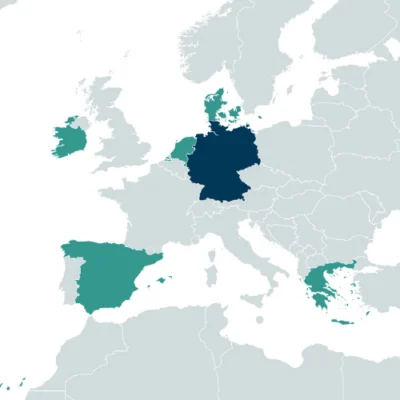Back to the future: Traditional agroforestry systems as NbS to face multiple societal challenges
Call
Duration
01/02/2025 – 31/01/2028
Total grant
Approx. 1,4 mil. €
More information
Matteo Dainese, matteo.dainese@univr.it
Partners of the project
- Department of Biotechnology, University of Verona, Verona, Italy
- Institute for Alpine Environment, Eurac Research, Bolzano/Bozen, Italy
- Department of Entomology, The Hebrew University of Jerusalem, Rehovot, Israel
- Department of Landscape, Spatial and Infrastructure Sciences – Institute of Landscape Development, Recreation and Conservation Planning, University of Natural
- Resources and Life Sciences, Vienna, Austria
- Centre for Transdisciplinary Development Studies, University of Trás-os-Montes and Alto Douro, Vila Real, Portugal
- Institute of Geosciences, Vilnius University, Vilnius, Lithuania
- Department of Biology and Geology, Physics and Inorganic Chemistry, Rey Juan Carlos University, Móstoles, Spain

Context
Over centuries, farmers have developed a keen knowledge about the practices and agricultural systems that best suit local characteristics and biogeographic conditions. These systems traditionally combined agricultural and forestry technologies to create more diverse and adapted agroforestry systems, providing food, fuel, and fibre to communities before the advent of modern nutrient and energy inputs. They can also sustain high levels of biodiversity, provide benefits such as carbon sequestration or soil enrichment, and support rural cultural heritage, societal, and aesthetic values.
Therefore, traditional agroforestry systems (TAS) contribute in multiple and complementary ways to the well-being of local people and play a key role in their cultural identity at local and broader levels: national and often global (world cultural heritage). As a result of this contribution, TAS can gain modern relevance as a NbS to deal with societal challenges such as the biodiversity crisis, climate change, and sustainable food production.
Main objectives
TRANSFORm aims to harness the potential of TAS as NbS to jointly address important social, economic, and environmental challenges effectively and adaptively, while simultaneously providing human well-being, ecosystem services, climate resilience, and biodiversity benefits. TRANSFOrm will explore the transformative potential of agroforestry in the Euro-Mediterranean region by developing and implementing a transdisciplinary research programme that contributes robust evidence on the potential of TAS as a NbS. This can be used to tackle interconnected challenges that include biodiversity conservation, provisioning of ecosystem services, and human well-being. TRANSFORm will address the following three main objectives:
- Identify the cultural, biological, and ecosystem service values of TAS;
- Test the multiple values of TAS;
- Explore the opportunities and challenges for scaling TAS as NbS.
Main activities
To achieve these objectives, TRANSFORm takes multiple disciplinary, interdisciplinary, and non-disciplinary perspectives to create holistic understandings of the social, economic, and environmental components of TAS at multiple scales. TRANSFORm focuses on three types of activities:
- Measure biodiversity and ecosystem functions across Euro-Mediterranean TAS using a replicated multi-scale design across six regional case studies;
- Evaluate natural capital and ecosystem services in TAS for farm and landscape decision-making combining a spatially-explicit approach with a cost-benefit analysis;
- Identify the opportunities and challenges of scaling TAS as NbS with an active engagement of local stakeholders to promote co-created vision(s) and suggested pathways.